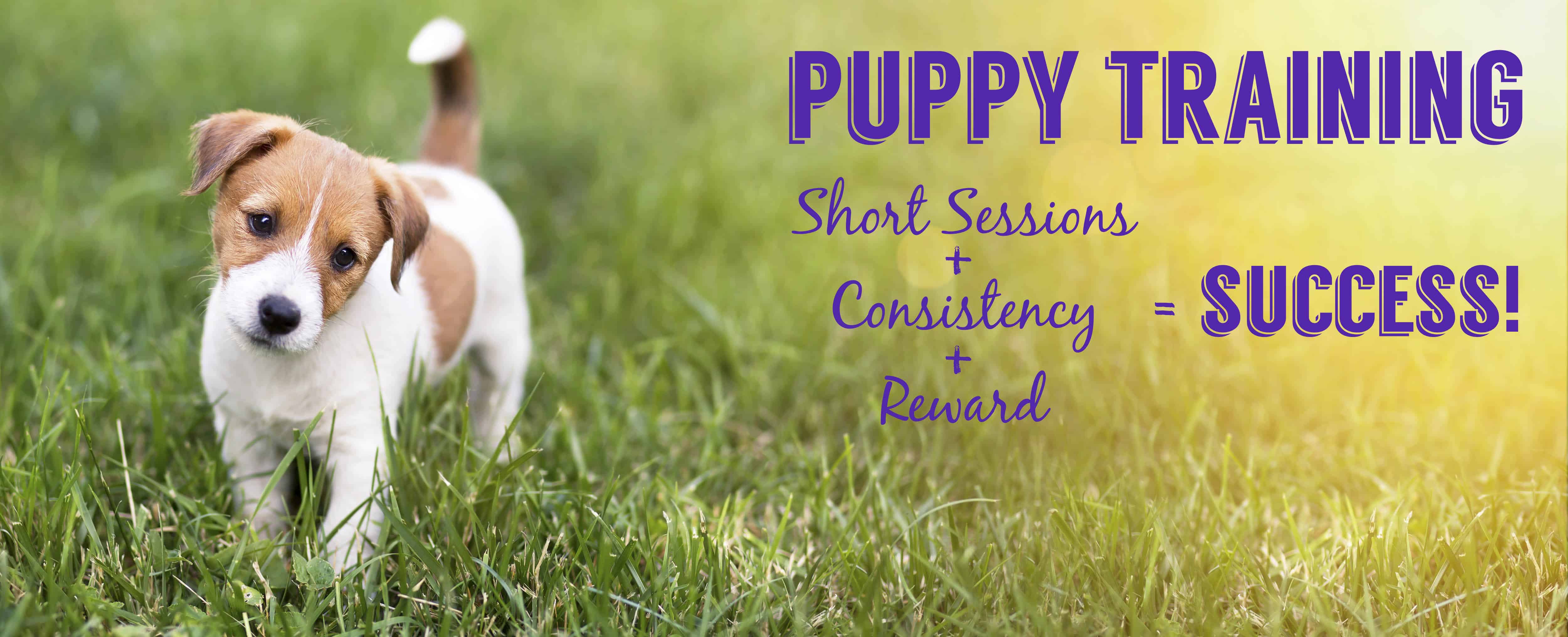Congratulations — it’s time to bring home your new puppy! You know how important socialization and good behavior are for a family pet, so you’re invested in starting a puppy obedience training program right from the start. Plus, puppy training builds a bond between a dog and his new human family and sets the stage for further behavior modification. But where do you start?
What Is Puppy Obedience Training?
Obedience training helps your pet learn his role in your family and in the world. It will teach him the skills he needs to interact with other dogs and with the people inside and outside your home. Puppy training is the first step to teaching healthy behaviors and avoiding negative ones. Often, dogs start their training by learning simple commands, such as “sit” and “stay,” though later on they may be trained in more specific ways, such as how to stay in a crate without whining or how to sit patiently without begging while the family eats dinner.
The best part of training your puppy at home is that you can personalize your efforts to your dog and your lifestyle. There’s no right or wrong skills you should start with. The most important part is teaching the skills your dog needs to be a good listener and follow your directions.
Puppies are ready and willing to learn, so it’s important to start teaching immediately once you bring your new dog home. Any time spent allowing negative behaviors could become a setback, so get your puppy started off on the right paw. Prevent problems before they begin. Here are some puppy obedience training tips to implement in at-home lessons.
Keep Training Short
Puppies don’t have very long attention spans, so keep all the puppy training sessions short. Practice one command for five minutes at a time, and again later when you have opportunities outside of training sessions. Your dog can only do one thing at a time, so focus on one skill and move on once he has mastered it. You should also always end the training on a positive note (treats!) so your pet is excited for his next lesson.
Be Consistent
When you were a kid in school, what helped you learn your spelling words and multiplication tables? Practice! Consistency is key to training your new puppy. He not only needs to keep practicing commands over and over with you, but he also needs you to be consistent with your approach. This means always reinforcing his training, even when you’re tired or busy. For example, if you’re cooking dinner and your dog is giving you the signal that he needs to go outside and relieve himself, turn off the stove and guide him outside immediately. Use the same word when teaching him simple commands like “sit” or “stay” or “no.” This helps to reinforce that each word is associated with a specific command you wish him to take.
Reward Your Puppy
Dogs are highly motivated by praise and rewards. Create positive associations for your puppy when he follows your commands by verbally encouraging him or sharing a bite of kibble or healthy dog treats. Rewards not only make training more fun for your pet, but also give him something to work for. Just make sure that treats don’t make up more than ten percent of his caloric intake each day to ensure he doesn’t put on any unnecessary weight.
Dogs are motivated by pleasing their owners, but also (like humans) seek opportunities for praise and rewards. Just make sure to wean your dog off of a treat once he starts to master a particular command. This will give him the confidence to perform commands on his own and teach him that not every good deed results in a snack.
Consider Professional Classes
We recommend that you consider committing to a puppy class with a professional trainer. An experienced trainer will give you guidance, help you with problems, and hold you accountable to building good habits in your puppy that will last a lifetime. Trainers offer at-home classes or training at their facility. Here are a few local trainers we recommend:
- Ja-Vic
- Cold Nose College
- K9 Kampus
- Christine Scott
- Wisney Way Dog Training
Whether you train your pet at home on your own or if you bring him to a class or an instructor, understand that patience is the most important skill you need during this process. Your puppy will inevitably make some mistakes or have an occasional accident. He needs your support during those times. Clearly and kindly correct the behavior or action and reinforce the training command you taught your pet. Your dog is counting on you and excited to learn.
